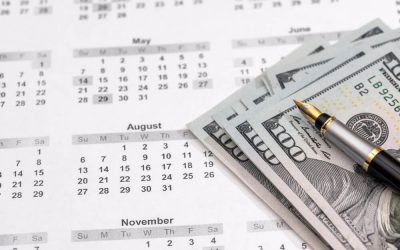
In the first part of our guide, we covered the basics of trading, technical and fundamental analysis, and introduced you to the variety of markets. Now that you have the necessary knowledge, we move on to the second part – practice.
Article content
Part II
Opening an Account with a Broker
After developing your trading strategy and mastering the fundamentals of market analysis, it’s time to choose a reliable broker and open a trading account. This stage is crucial for your successful trading. Let’s explore how to choose the right broker and ensure the safety of your funds.
How to Choose a Reliable Broker
- Reputation. Research the broker’s reputation. Look for reviews online, for example, on Trustpilot. Connect with other traders to learn about their experiences with different brokers.
- Regulation. Ensure that the broker holds the necessary licenses and complies with financial regulatory authorities. This ensures adherence to high standards of safety and reliability.
- Account Types. Make sure the broker offers account types that match your needs and financial capabilities.
- Spreads and Commissions. Evaluate the cost of trading and clarify whether there are hidden fees or unforeseen expenses that could affect your profitability in the future. You can do this by contacting the broker and clearly specifying all the financial conditions related to your trading.
- Trading Conditions. Find out about available markets, assets, and trading platforms. Ensure they align with your strategy.
- Security. A reliable broker should ensure the security of your funds. Make sure the broker uses modern encryption methods, and you have the option to enable two-factor authentication for your trading account.
- Informational Support. Verify that the broker provides useful resources such as analytical reviews, news feeds, and educational materials. These are valuable for both beginners and professional traders.
- Customer Service. Test the broker’s customer service. Reach out with questions and assess how quickly and professionally the broker responds. Friendly and efficient service is an important part of successful trading.
Customer service, support, and informational assistance build confidence among traders, which, in turn, contributes to successful trading and effective fund management.

Registration and Verification
After selecting a reliable broker and the type of trading account, the next step is to register and verify your account. This process is crucial in opening a trading account and ensuring the security of your funds.
Steps to Open a Trading Account
- Complete the registration form. Start by filling out an online registration form on the selected broker’s website. You will be required to provide your personal information and contact details.
- Identity verification. To confirm your identity, you will need to provide photocopies of your identification documents. This is required in accordance with anti-money laundering and fraud prevention laws.
- Choose the account type. Depending on your strategy and financial goals, select the type of trading account that suits your requirements.
- Make a deposit. After successful registration, you will need to deposit funds into your account. This can be done through various methods, including bank transfers, credit cards, or electronic payment systems.
- Install the trading platform. Download and install the trading platform provided by your broker. This platform will be your primary tool for trading.
- Start trading. After successful registration and making a deposit, you are ready to start trading. Use the trading strategy you have developed to make trading decisions.
The First Trade
The first trade can be exciting and present a specific challenge for beginner traders. Here are specific steps to help you successfully place your first trade:
- Asset and market. Decide which asset you want to trade (e.g., currency pairs, stocks, cryptocurrencies) and on which market (e.g., forex, stock market).
- Order type. Determine whether you want to use Instant Execution or Market Execution and choose the order type (market, limit entry, stop entry, stop loss, trailing stop) that aligns with your strategy.
- Position size. Set the number of asset units you want to buy or sell.
- Stop-loss and take-profit (recommended). If it fits your strategy, set stop-loss and take-profit levels to manage risks and protect profits.
- Enter the trade. Before sending the order, carefully review all trade parameters to avoid errors.

How to Place Orders
You’ve determined what you want to trade and on which market. It’s time to place orders and open trades. An order is an instruction you send to your broker to execute a trade in the market. There are two main types of orders: Instant Execution and Market Execution.
- Instant Execution: With this type of order, you specify how much you want to buy or sell, the direction, and a specific price at which you want the trade to be executed. It’s important to understand that your trade will be executed at the exact price you specify, even if the market price at the time of execution is different. This type of order provides a more predictable execution at a predetermined price, but it may be less flexible, especially when market prices are highly volatile.
- Market Execution: With this type of order, you specify how much you want to buy or sell and in which direction. However, the trade is executed at the current market price, which may slightly differ from the price you saw when placing the order. This happens because market prices are constantly changing. Market Execution orders offer more flexibility and usually result in a trade closer to the current market price.
In addition to Instant Execution and Market Execution, there are various order types that allow you to manage your strategy:
- Limit Order: This order specifies the price at which you want to enter a trade. The trade will only be executed if the market price reaches your set level.
- Stop Loss Order: A stop order is used to protect against losses. You set a specific price, and if the market price reaches that level, your order becomes active, and the trade is closed. This helps protect you from significant losses if the price sharply declines.
- Take Profit Order: This sets a target for your trade. When the market price reaches your specified target, the trade is automatically closed, securing your desired profit.

Position Size
Determining the position size when opening a trade, taking leverage into account, is a key aspect of risk management. Let’s break it down with an initial capital of $1,000:
- Determine the risk level: Decide how much of your initial capital you are willing to risk in a single trade. For example, if you are willing to risk no more than 2% of your capital, that’s your risk level.
- Consider the stop-loss: Determine how far from the entry price your stop-loss will be set. Let’s assume you decide to set the stop-loss at 50 pips (a pip is the minimum price change in the market).
- Calculate the loss with the stop-loss: If you have $1,000 initial capital and a 2% risk level, the maximum loss in a single trade will be 2% of $1,000, which is $20.
- Account for leverage: Take leverage into account. For instance, if the leverage is 1:100, you can control a position worth 100 times your initial capital. In this case, you can open a position worth $2,000 using your $20.
- Calculate the position size: To determine the position size, divide your maximum loss ($20) by the distance to the stop-loss (50 pips). This will give you a position size of 0.4 lots (20 / 50).
- Control the risk: Now that you know the position size, ensure that it aligns with your risk level (2% of initial capital). If the position size exceeds 2% of your capital, reduce the trade volume or increase the stop-loss level.
Position size and risk management are crucial aspects of your strategy. Remember that success in trading requires both knowledge and skills, as well as careful planning and practice.
In the second part of this guide, we provided practical recommendations for opening an account and placing trades. In the third part, you will learn about the psychological aspects of trading and methods for analyzing your trading results. Stay tuned for our updates to not miss important information for mastering trading.
Good luck on your journey to successful trading!
Recommended Reading:






